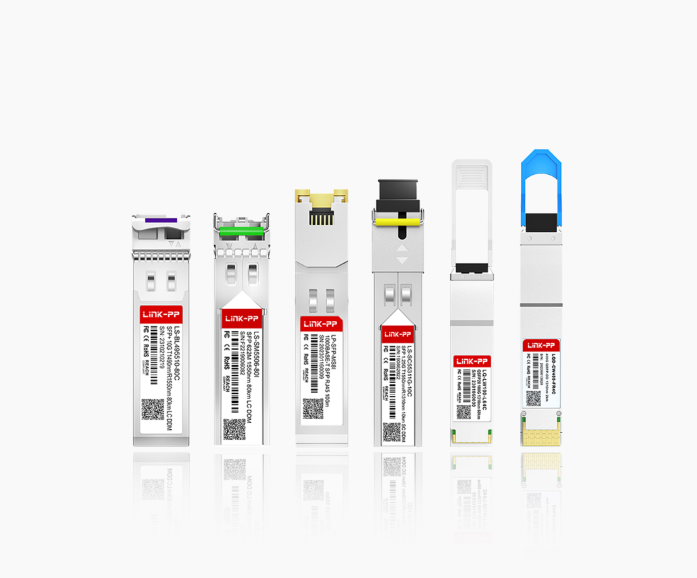
Imagine a world where your smartphone couldn't connect to Wi-Fi from different routers, or your email from one provider couldn't reach another. Chaos, right? This is where interoperability in networking comes into play—it's the invisible glue that allows diverse systems, devices, and applications to communicate and work together seamlessly. In today's interconnected digital landscape, achieving robust network interoperability isn't just a technical goal; it's a business imperative for efficiency, scalability, and innovation. Whether you're managing a small office network or a global data center, understanding and implementing interoperability can save time, reduce costs, and future-proof your infrastructure.
In this comprehensive guide, we'll dive deep into what interoperability means, why it matters, the challenges involved, and practical steps to achieve it. Plus, we'll explore how components like optical modules—including specific models from LINK-PP—play a critical role in ensuring smooth, interoperable networks. Let's get started!
📝 Key Takeaways
Interoperability lets devices and systems share info easily. This makes things simpler for you.
Standards and protocols help devices connect fast. You do not need extra steps. This saves you time and stops frustration.
Interoperability helps people work together better. You can use different devices with others easily.
Picking products with interoperability can save you money. It also makes using them smoother for you.
Knowing about interoperability helps you pick the right technology. Your devices will work well together.
📝 What Is Interoperability in Networking?
At its core, interoperability refers to the ability of different networking systems, devices, or software from various vendors to exchange and use information effectively without requiring special effort from the user. It's like a universal language that enables a Cisco router to "talk" to a Juniper switch, or a Windows-based server to integrate with Linux applications. This concept extends beyond hardware to include protocols, data formats, and APIs, ensuring end-to-end connectivity in complex environments such as cloud computing, IoT (Internet of Things), and 5G networks.
Key aspects of interoperability include:
Technical Compatibility: Devices adhere to common standards (e.g., TCP/IP, Ethernet) to communicate.
Semantic Understanding: Systems interpret data consistently, avoiding misinterpretation.
Functional Cooperation: Components work together to perform tasks, like data routing or storage.
Without interoperability, networks would be siloed, leading to inefficiencies, higher costs, and limited innovation. For instance, in a multi-vendor data center, lack of interoperability could cause packet loss, latency, or complete communication failures.
📝 Why Is Interoperability Important? The Benefits Unveiled
Interoperability is the backbone of modern networking, driving several key advantages that enhance performance and business outcomes. By fostering seamless network connectivity, it enables organizations to leverage best-of-breed solutions without vendor lock-in. Here's why it's crucial:
Cost Efficiency: Mixing and matching equipment from different vendors can reduce capital expenditures. You're not tied to a single supplier, allowing for competitive pricing and flexibility.
Scalability and Innovation: As networks grow, interoperability ensures new technologies (e.g., SD-WAN, edge computing) integrate smoothly, supporting digital transformation initiatives.
Enhanced Reliability: Diverse components working together create resilient networks. If one device fails, interoperable systems can often reroute traffic, minimizing downtime.
Improved User Experience: End-users enjoy uninterrupted services, whether it's streaming video, accessing cloud apps, or using IoT devices. This is essential for achieving high-performance data communication, a top priority for IT managers.
According to industry reports, organizations that prioritize interoperability see up to 30% faster deployment times and lower total cost of ownership. For example, in healthcare, interoperable systems allow patient data to flow securely between hospitals, improving care coordination.

📝 Challenges in Achieving Network Interoperability
Despite its benefits, achieving full interoperability isn't always straightforward. Several hurdles can complicate implementation, especially in heterogeneous environments with legacy systems. Common challenges include:
Vendor-Specific Extensions: Some manufacturers add proprietary features to standards, creating compatibility issues. This can lead to "islands" of functionality that don't interact well.
Evolving Standards: Networking protocols like HTTP/2 or MPLS are constantly updated, making it hard to keep all components synchronized.
Security Concerns: Ensuring secure data exchange across different systems requires consistent encryption and authentication methods, which can vary.
Testing Complexity: Validating interoperability across multiple devices is time-consuming and resource-intensive. Without thorough testing, networks may suffer from performance bottlenecks.
To address these, industries rely on protocol standards for interoperability, such as those from IEEE and IETF. For instance, the benefits of network interoperability in data centers include reduced troubleshooting time and better resource utilization, but only if challenges are proactively managed.
📝 How to Ensure Interoperability: Standards, Best Practices, and Tools
Achieving interoperability involves a mix of adherence to standards, strategic planning, and the right hardware. Here's a practical approach:
Adopt Industry Standards: Stick to widely accepted protocols like TCP/IP for internet communication, SNMP for network management, and IEEE 802.3 for Ethernet. These provide a common foundation.
Implement Testing and Certification: Use interoperability testing tools to validate device compatibility before deployment. Organizations like the UNH-IOL offer certification programs.
Leverage Modular Design: Choose components that support open standards, such as optical transceivers that comply with MSA (Multi-Source Agreements). This allows for flexibility and easier upgrades.
Plan for Future-Proofing: Consider scalability from the start. For example, in data center interoperability, using standardized form factors like SFP28 or QSFP28 ensures compatibility with various switches.
To illustrate key interoperability standards, here's a table summarizing common ones:
Standard/Protocol | Purpose | Example Use Case |
|---|---|---|
TCP/IP | Foundation for internet communication | Enables data transfer between different OSes |
Ethernet (IEEE 802.3) | Local area network (LAN) connectivity | Connects switches, routers, and PCs from multiple vendors |
SNMP | Network management and monitoring | Collects data from diverse devices for performance analysis |
RESTful APIs | Application integration | Allows cloud services to interact seamlessly |
MSA for Optical Modules | Hardware compatibility | Ensures transceivers from brands like LINK-PP work in various switches |
By following these best practices, you can build a network that supports seamless data integration and adapts to emerging technologies. For instance, incorporating LINK-PP's interoperable solutions can simplify this process, as they are designed to meet global standards.
📝 The Role of Optical Modules in Network Interoperability
Optical transceivers, such as SFP, SFP+, and QSFP, are critical components in modern networking, converting electrical signals to light for high-speed data transmission over fiber optics. They play a pivotal role in interoperability by ensuring that devices from different manufacturers can communicate efficiently over varied distances and speeds. Without standardized optical modules, networks could face compatibility issues, leading to data loss or increased latency.
In fiber optic networks, interoperability depends on modules adhering to MSAs, which define physical dimensions, electrical interfaces, and communication protocols. This allows, for example, a LINK-PP optical module to be plug-and-play compatible with switches from Cisco, Arista, or Juniper. Key benefits include:
Flexibility: Mix and match modules based on performance needs, such as distance (short-range vs. long-range) or data rate (1G to 400G).
Cost Savings: Avoid vendor lock-in by using third-party modules that meet the same standards.
Future-Readiness: Upgrading to higher speeds (e.g., from 10G to 25G) is easier with interoperable modules.
A prime example is the LINK-PP 100G QSFP28 LR4 optical module, which supports long-range transmission up to 10km and is fully compliant with IEEE 802.3bm and MSA standards. This model is ideal for data centers and enterprise networks seeking high-performance data communication without compatibility headaches. By choosing LINK-PP's reliable modules, you ensure that your network infrastructure remains agile and interoperable, even as demands evolve.
📝 Conclusion: Building a Connected Future with Interoperability
Interoperability in networking is more than a technical concept—it's a strategic enabler for growth, efficiency, and innovation. By understanding its principles, addressing challenges through standards, and leveraging interoperable components like optical modules from LINK-PP, you can create resilient networks that adapt to change and deliver seamless experiences. Whether you're optimizing a local LAN or scaling a cloud infrastructure, prioritizing interoperability will pay dividends in reduced costs and enhanced performance.
📝 FAQ
What does interoperability mean for your devices?
Interoperability lets your devices work together. You can send files or messages easily. You do not need special cables or programs. Your devices connect without trouble.
What are common examples of interoperability in daily life?
You use Wi-Fi to link your phone and laptop. You print from any computer in your house. You play music from your phone on a smart speaker. These are ways interoperability helps you.
What problems can you face without interoperability?
You might have trouble connecting your devices. You may need extra adapters or programs. You spend time trying to fix things. You get upset when devices do not work together.
What helps devices achieve interoperability?
Devices follow the same standards and protocols. These rules help them share data. You get an easier time when companies use these rules. Your devices connect and work well.
What should you check before buying new technology?
You should see if devices use standards like Wi-Fi or Bluetooth. You read about the product before you buy it. You ask if it works with what you already have. This helps you avoid problems.




